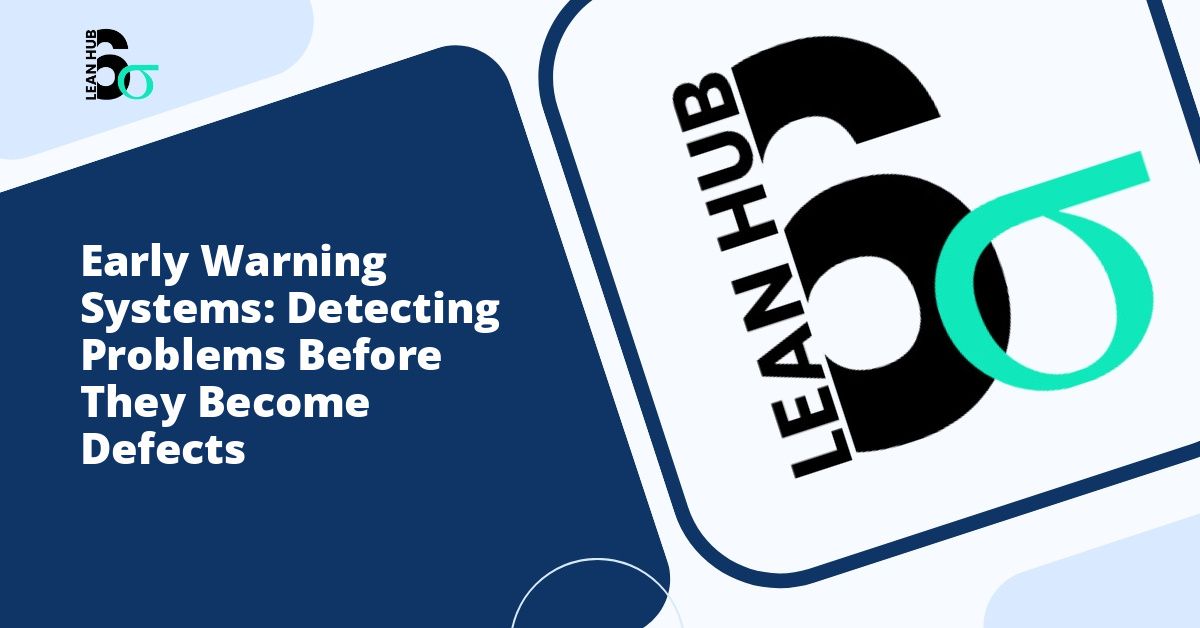In today’s fast-paced business environment, the difference between success and failure often lies in an organization’s ability to identify and address potential issues before they escalate into costly defects. Early warning systems serve as the critical first line of defense, enabling companies to maintain quality standards, reduce waste, and ensure customer satisfaction. This comprehensive guide explores how organizations can implement effective detection mechanisms to catch problems in their infancy.
Understanding the Value of Proactive Problem Detection
The concept of early warning systems extends far beyond simple quality control. These systems represent a fundamental shift in organizational thinking, moving from reactive problem-solving to proactive risk management. When companies wait for defects to manifest fully, they face increased costs, damaged reputations, and dissatisfied customers. By contrast, detecting anomalies at their earliest stages allows for swift intervention with minimal disruption. You might also enjoy reading about How to Conduct Process Audits: Essential Verification and Validation Techniques for Quality Management.
Research consistently demonstrates that the cost of fixing a problem increases exponentially as it progresses through various stages of production or service delivery. A minor deviation caught during initial processing might require minutes to correct, while the same issue discovered at the customer level could result in recalls, refunds, and lasting brand damage. You might also enjoy reading about Out of Control Signals: 8 Rules for Detecting Process Issues Before They Impact Quality.
The Role of Lean Six Sigma in Early Detection
Lean six sigma methodologies provide a structured framework for developing robust early warning systems. This approach combines the waste reduction principles of lean manufacturing with the statistical rigor of Six Sigma, creating a powerful toolkit for problem prevention. Organizations implementing lean six sigma benefit from systematic data collection, analysis, and process improvement that naturally supports early detection efforts. You might also enjoy reading about Lessons Learned Documentation: Capturing Knowledge for Future Projects.
The DMAIC cycle (Define, Measure, Analyze, Improve, Control) inherent to lean six sigma creates multiple checkpoints where potential problems can be identified. Each phase offers opportunities to establish monitoring systems that flag deviations from expected performance. By integrating early warning mechanisms throughout this cycle, organizations build multiple layers of protection against quality failures.
The Recognize Phase: Your First Line of Defense
Within any comprehensive quality management system, the recognize phase represents the critical initial step where potential problems first become visible. This phase requires heightened awareness, trained observation skills, and well-designed monitoring systems. During the recognize phase, employees at all levels must remain vigilant for signs that processes are drifting from their optimal state.
The recognize phase succeeds when organizations create an environment where identification of potential issues is encouraged and rewarded rather than punished. Teams must understand that recognizing a problem early demonstrates vigilance and professionalism, not failure. This cultural shift ensures that warning signs are reported promptly rather than concealed out of fear or embarrassment.
Key Components of an Effective Recognize Phase
- Clear baseline metrics: Establish normal operating parameters so deviations become immediately apparent
- Standardized observation protocols: Train staff on what to look for and when to raise concerns
- Accessible reporting mechanisms: Make it simple for anyone to flag potential issues without bureaucratic obstacles
- Regular monitoring schedules: Implement consistent checkpoint reviews that catch drift before it becomes critical
- Cross-functional awareness: Ensure different departments understand how their observations might signal problems elsewhere
Building Effective Early Warning Indicators
The foundation of any early warning system rests on carefully selected indicators that signal potential problems. These metrics must be specific, measurable, and directly linked to critical quality parameters. Organizations should focus on leading indicators that predict future problems rather than lagging indicators that only confirm issues after they have occurred.
Effective early warning indicators share several common characteristics. They provide timely information, offering enough advance notice to take corrective action. They are sensitive enough to detect small deviations but not so sensitive that they generate excessive false alarms. They are also clearly defined, ensuring consistent interpretation across different shifts, teams, and locations.
Types of Early Warning Indicators
Process Variation Indicators: These track consistency in key process parameters. Increasing variation, even within acceptable limits, often signals impending problems. Statistical process control charts excel at revealing these subtle trends before they result in defects.
Input Quality Metrics: Monitoring the quality of raw materials, information, or other inputs provides advance warning of downstream issues. A decline in supplier quality or data accuracy will eventually manifest as defects if left unaddressed.
Environmental Factors: Changes in temperature, humidity, equipment vibration, or other environmental conditions can predict quality problems. Establishing acceptable ranges for these factors creates an early detection net.
Human Performance Indicators: Increases in minor errors, near-misses, or procedure deviations often precede more serious quality failures. These indicators reveal when training, fatigue, or system design issues require attention.
Technology-Enabled Detection Systems
Modern technology has revolutionized the capabilities of early warning systems. Sensors, artificial intelligence, and real-time data analytics now enable continuous monitoring at scales previously impossible. Organizations can track hundreds of parameters simultaneously, with algorithms automatically flagging unusual patterns that human observers might miss.
Internet of Things (IoT) devices embedded in equipment provide constant streams of operational data. Machine learning algorithms analyze this information to establish normal operational patterns and detect deviations. These systems learn over time, becoming increasingly accurate at distinguishing genuine warning signs from normal variation.
However, technology should augment rather than replace human judgment. The most effective early warning systems combine automated monitoring with trained human observation. Technology excels at processing large datasets and identifying statistical anomalies, while humans contribute contextual understanding and pattern recognition based on experience.
Creating a Culture of Early Detection
Technology and methodologies alone cannot ensure effective early warning systems. Organizations must cultivate a culture where problem detection is valued and expected at every level. This cultural transformation requires leadership commitment, appropriate incentives, and sustained communication about the importance of vigilance.
Employees need assurance that reporting potential problems will not result in blame or punishment. Instead, organizations should celebrate early detection as a success, recognizing individuals and teams who identify issues before they escalate. This positive reinforcement encourages continued vigilance and open communication.
Training programs should emphasize the recognize phase and early detection principles. Workers must understand not only what to look for but why early detection matters and how their observations contribute to organizational success. Regular refresher training ensures these skills remain sharp and top of mind.
Implementing Your Early Warning System
Successful implementation of early warning systems follows a structured approach. Begin by identifying your most critical processes and the potential failure modes that pose the greatest risk. Apply lean six sigma principles to map these processes thoroughly, identifying logical points for monitoring and measurement.
Next, establish baseline performance metrics and define what constitutes a warning sign. These thresholds should trigger investigation and potential action without creating alarm fatigue from excessive false positives. Start with conservative settings and adjust based on experience and data.
Develop clear protocols for responding to early warnings. Specify who should be notified, what initial steps should be taken, and how decisions about corrective action will be made. These protocols ensure rapid, consistent responses that prevent problems from advancing.
Finally, treat your early warning system as a living entity requiring regular review and refinement. Conduct periodic assessments to determine whether indicators remain relevant, thresholds are appropriately set, and response protocols are effective. Continuous improvement principles apply to detection systems just as they do to the processes being monitored.
Conclusion
Early warning systems represent a fundamental shift from reactive to proactive quality management. By detecting problems before they become defects, organizations save costs, protect reputations, and maintain customer satisfaction. The integration of lean six sigma methodologies, particularly through a robust recognize phase, provides the structure and discipline necessary for effective early detection.
Success requires more than tools and techniques. It demands organizational commitment to vigilance, investment in monitoring capabilities, and cultivation of a culture where problem identification is celebrated. As markets become more competitive and customer expectations continue rising, the ability to catch and correct issues early will increasingly separate industry leaders from those who struggle to keep pace. Organizations that master early warning systems position themselves for sustained success in an environment where quality and efficiency are non-negotiable.








